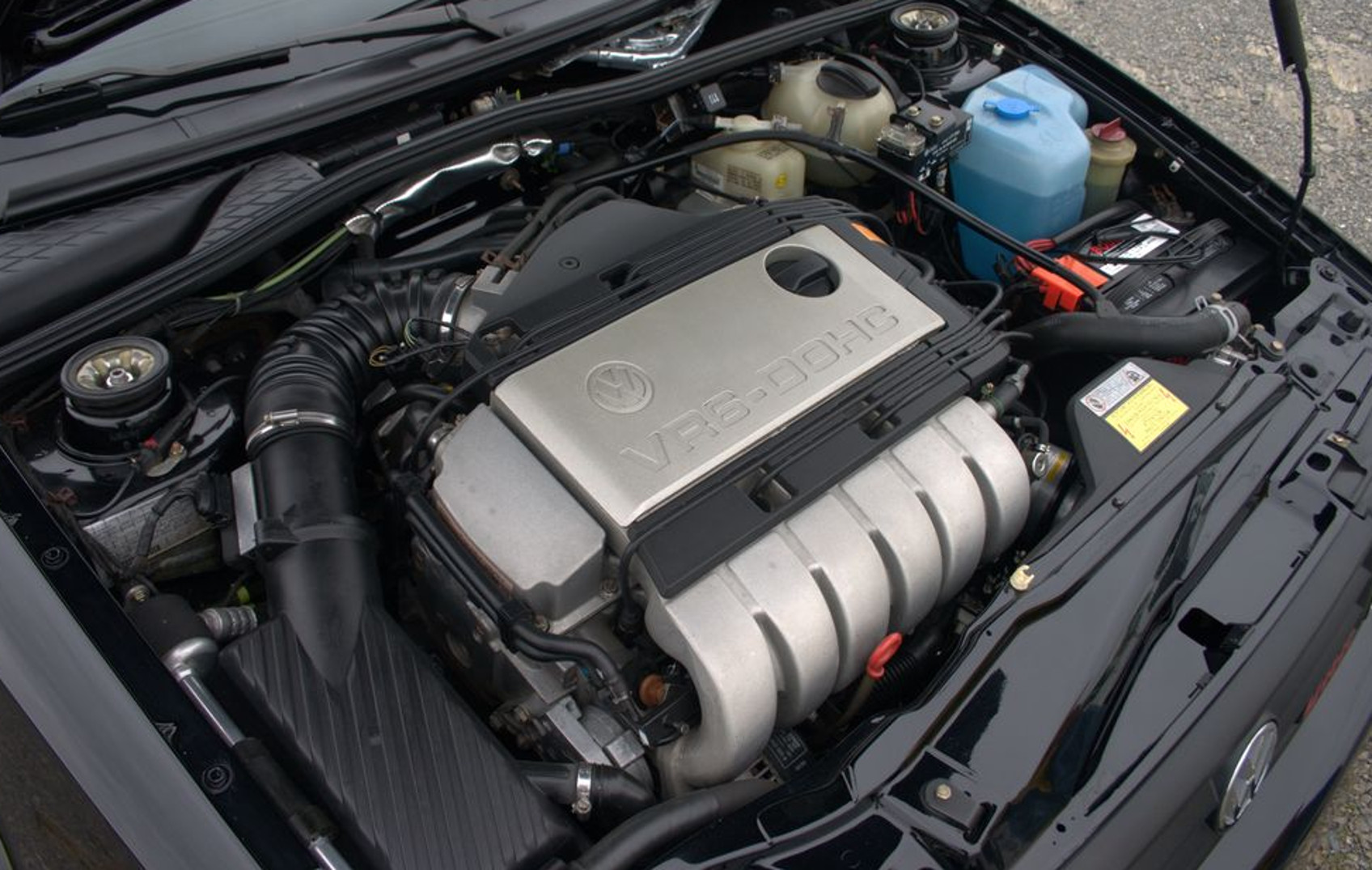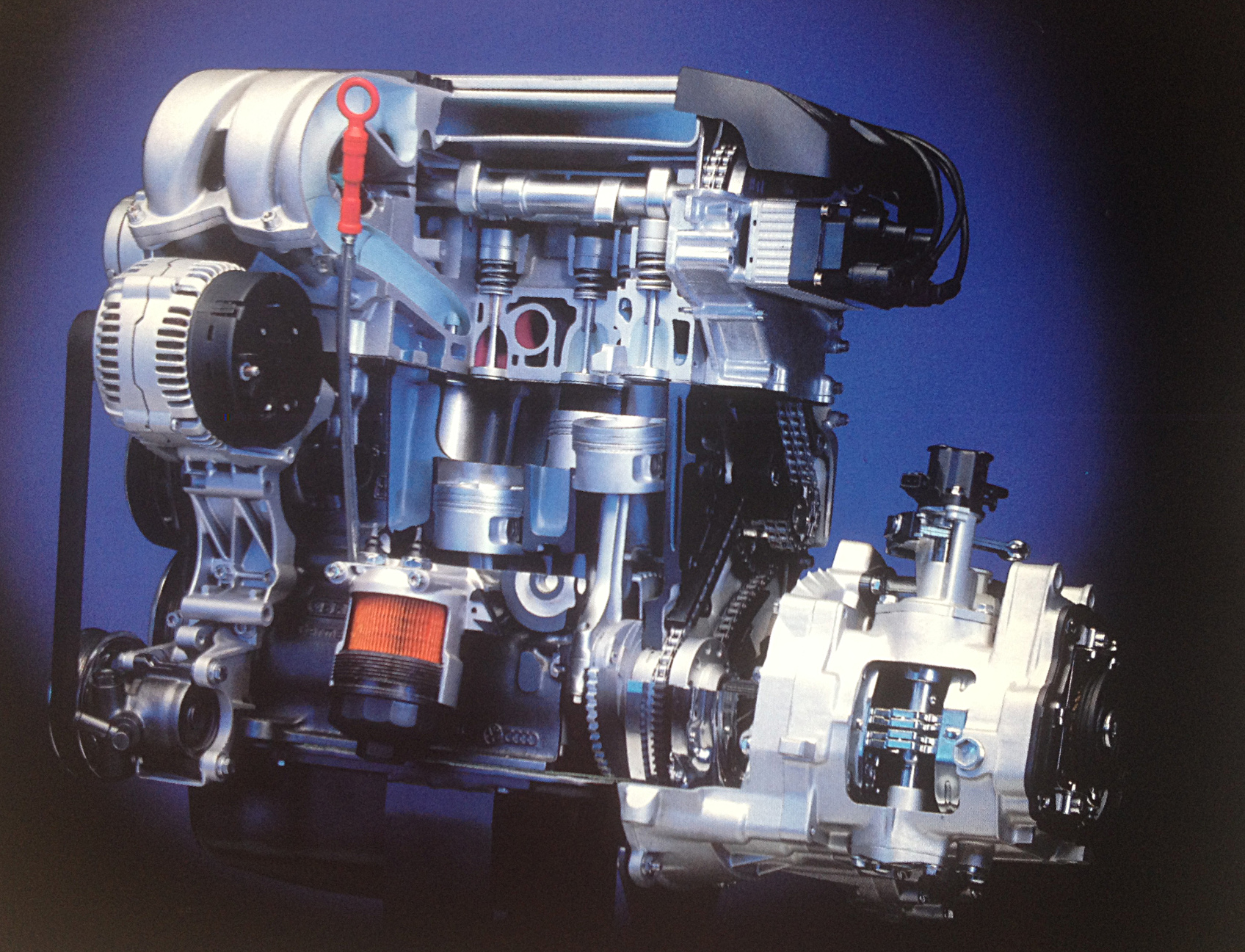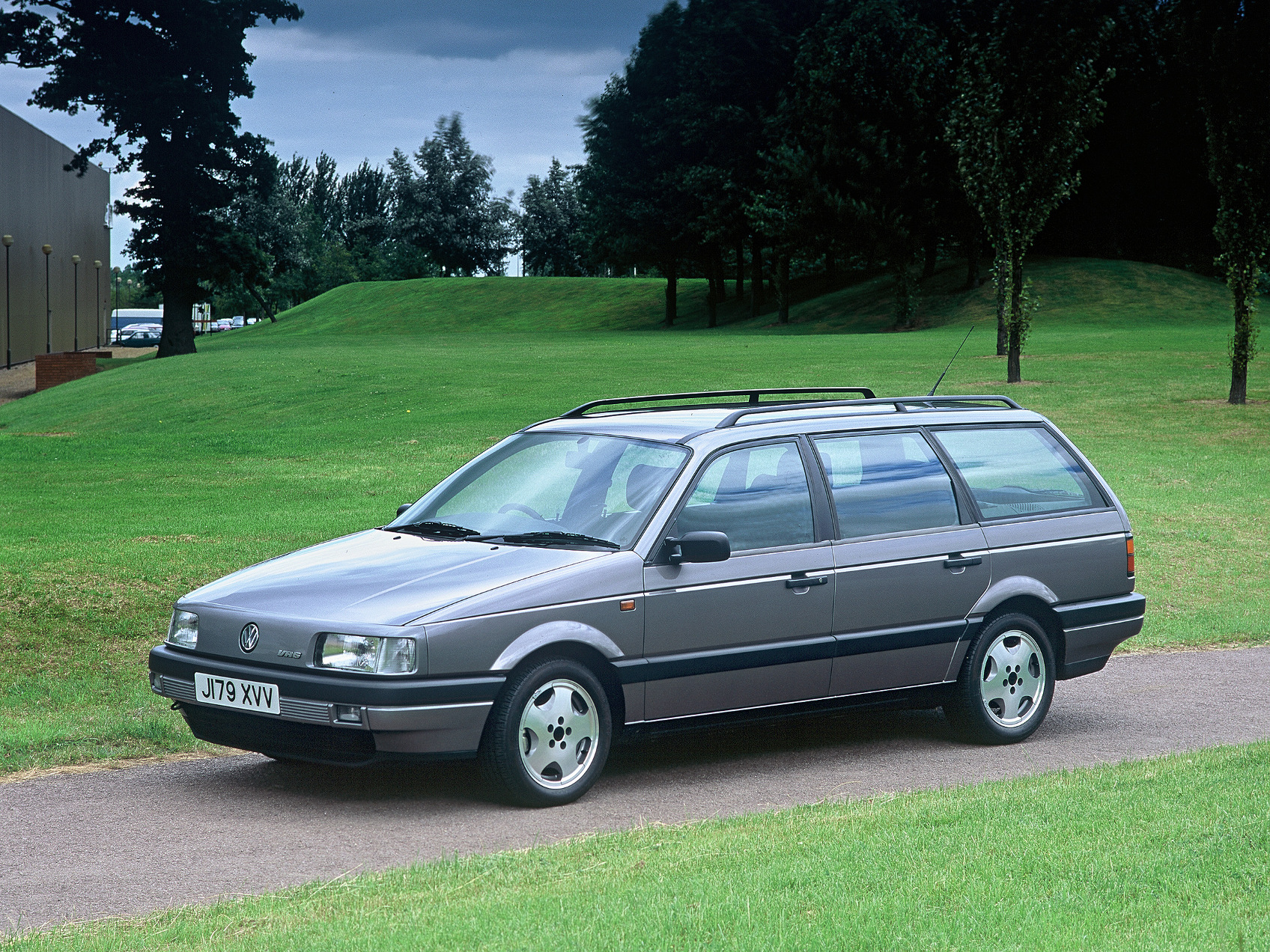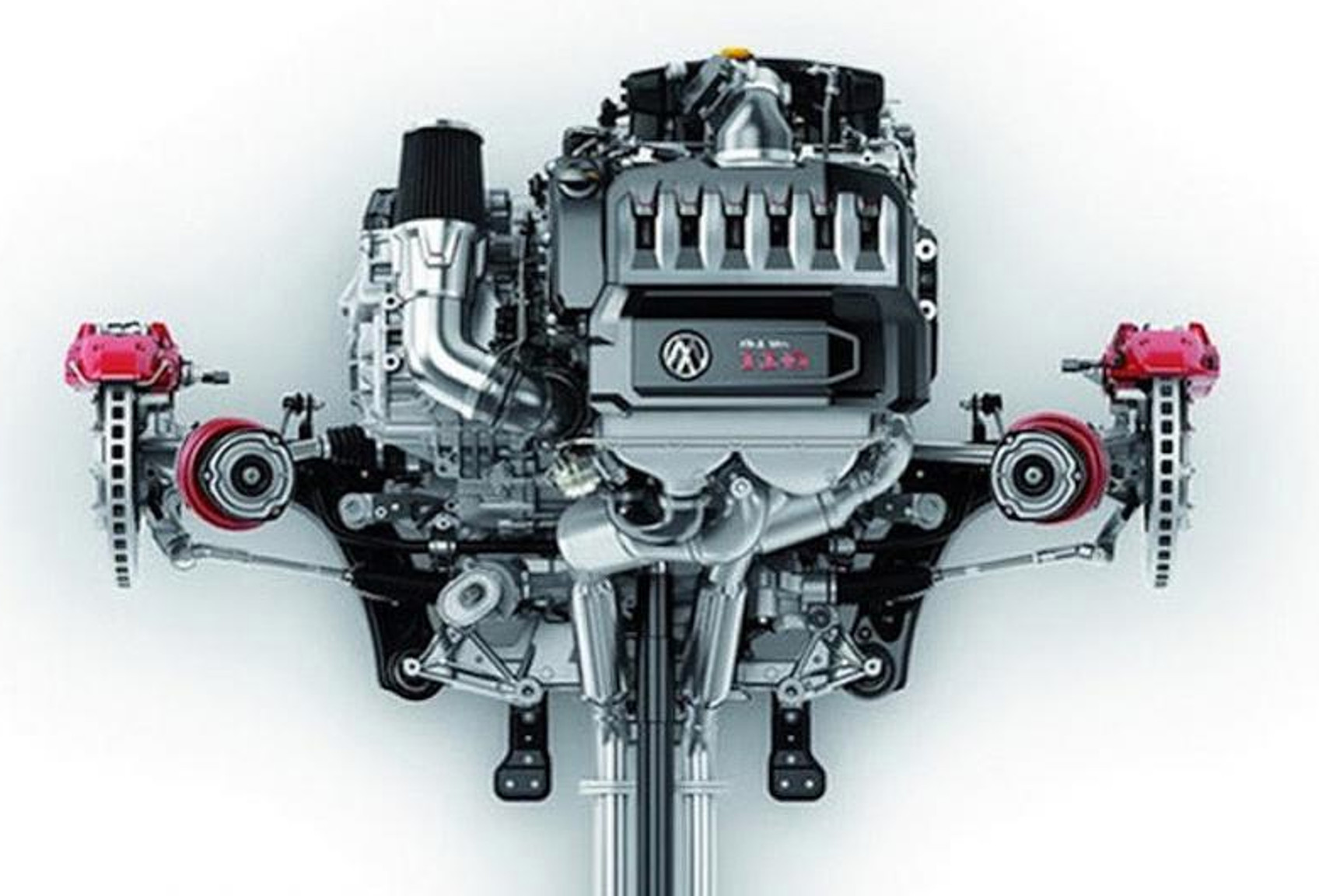Admired for both their throaty, wholly addictive exhaust note and performance, Volkswagen’s VR6 engines and later V5 were hot news when they appeared in the late ‘80s. But what does the VR stand for, what’s meant by a ‘narrow angle’ engine and what were these two very distinctive powerplant’s key features? We’ve got the answers…
Often in car manufacturing, technical innovation is spurred on by a new, demanding design brief. So, when the men in suits at Volkswagen said they wanted an exciting high-performance six-cylinder engine for its existing four-cylinder Passat, Golf and Corrado, a suitable engineering solution had to be found to make it fit.

Compact Six Pot
So the main criteria for these new six-pot engines was that they had to be compact enough to fit transversely in a front wheel-drive model where space was already at a premium. And this is where the ‘narrow angle’ bit comes in, with VW designing two narrow cylinder blocks (15 degrees apart) sharing a single, common cylinder head. Hence the name – VR, ‘V’ (describing the shape) and ‘R’ referring to the fact that the cylinders were ‘reihenmotor’ or ‘inline’. The fact that there are two offset banks of cylinders gives the engine that unique soundtrack.

The VR6 was clever in other respects, too. For instance, it only needed two overhead camshafts to drive all the valves, the forward one to control the six valves for the front cylinder bank, and the second one controlling valves at the rear. All without the need for rockers, a bit like a single over-head cam arrangement, making it cheaper to make and simpler to maintain. When the switch was made to heads with two valves per cylinder (24v), the same principle applied but here one cam controlled the intake valves, the other the exhaust valves – this time with rockers, a bit more like a conventional DOHC.
To get two rows of combustion chambers in the same cylinder head, the intake and exhausts port lengths between the two rows of cylinders varies in length. Normally, this would put the VR6 out of balance, but VW compensated for this by tuning the intake manifold, camshaft overlaps and lift profiles to even out the power. Again, all clever stuff.

There was even a additional electric pump to circulate coolant while the engine is running and immediately after the engine is switched off, augmenting the usual belt-driven main water pump.
VR6 engines unveiled
The VR6 made its debut in the Passat and Corrado first in 1991. The original VR6 was given the engine code ‘AAA’ and had a displacement of 2.8-litres, although in the Corrado bore and stroke were increased very slightly to give 2.9-litres (identified by the ABV engine code). This engine was originally meant to have a variable length inlet manifold, the VSR, made by Pierburg, but it was ruled out prior to production and subsequently offered as an aftermarket item by Schrick.

In 1992, the VR6 was offered in the Mk3 Golf as well as the Vento/Jetta. Then, in 1997, a cylinder was removed to make the 150bhp V5 which had an uneven number of cylinders in a V-design. Capacity dropped to 2.3-litres and it found a home under the bonnet of the Passat in the same year and the Golf and Bora from 1999.
More valves, more power
From 1999, the VR6 was given 24 valves and produced 201bhp, becoming the range topping model in the Golf and Bora range. You can identify these engines by their AQP and AUE engine codes. The VR6 name was replaced by the 4Motion V6 nomenclature shortly afterwards. Capacity was increased to 3.2-litres in 2001 for the 225bhp RSi Beetle, with the same engine later being used in the Mk4 Golf R32. It even went in the original Audi TT, A3 and carried over into the Mk5 Golf R32.

It’s last European application was in the Passat, CC and Touareg with the option being mostly dropped from catalogues by 2015. There was talk of a VR6 revival in the form of a 496bhp 3.0-litre twin turbo unit (below), but with the constant evolution of powerful four-cylinder cars and increased awareness of environmental issues, the plan was dropped.

Of course the VR6 is particularly loved by performance fanatics who hanker after low down torque and seamless power delivery. It does have its downsides, though, not least the fact that owners have to finance its thirst at the petrol pumps. It’s a reasonably heavy unit, too, which doesn’t do cars so equipped many favours when it comes to handling prowess. And you do need to watch for timing chain wear, because if a chain snaps the results don’t bear thinking about.
However, in truth, when a VR engine’s ‘on song’ you can forgive it virtually anything…
Ian
The opinions expressed here are the personal opinions of the author and do not necessarily represent the views and opinions of VW Heritage.


Lancia made a narrow angle V6 slightly before VW did, in 1924.
That was actually a V4
Love my 24V V6 4 motion Bora that’s getting a MK5 R32 transplant soon 😊
Did you ever do this ?
I have a V6 4-Motion Bora that I dropped the BHE 3.2 with DSG box into
Hello, on my side, we put a BUB block with BDE head cylinders on a MK4 FWD, apart screws length which has to be revised, this 3 liters “hybrid” works really well and make an unique sound 🙂 , and the performances are incredible !
I have a highly modified 1998 VR6 Jetta. Now needs timing guides. Solid car otherwise. New tires, Battery, axles… Much more… Need to sell. My loss your gain. Currently runs. Make offer. 541-971-3638. Keenan
Bit far for us, but good luck with the sale Keenan.
I have a 1998 Rialta with a VR6 for sale by owner in Wauchula, fl. 863-832-2230
Read the VR6 originally displaced 2.4-litres prior to being increased to 2.8-litres.
However have to wonder whether Volkswagen actually considered a VR4 variant at some point during or after the development of the VR6 engine (possibly as a replacement for the EA827), since there is appeal in the idea of a Lancia-like narrow-angle V4 from the 1990s beyond.
Additionally it seems the VR6 was in fact related to the EA827, guess it is understandable why it was created given other EA827 6-cylinder designs were either a potential inline-6 or a 90-degree V6 (via Audi).
Yet that brings up the question of whether Volkswagen attempted to develop an EA827 based 60-degree V6?
It was actually designed as a diesel, hence the forged rods and cranks
There’s a diesel VR6 in the museum in Wolfsburg I believe (I’ve seen pics of it)
Hi I have a mk4 golf V6 2.8 4 motion can someone recommend a good turbocharged kit please ( no Chinese )
We are selling our 2001 VR6 5 speed manual. 66 K original miles. Sun roof. Awesome Kenwoid stereo system. Tornado Red. Needs brakes and a windshield. Some exterior paint damage.
617.803.5288. MA
hi, it sounds like a great car, did you manage to sell it? if not, i may be interested
Time for a turbocharged v6 in the Atlas. I want one but the VR6 is gutless.
Engine code DDKA is a 300HP 2.49L VR6 with a turbo – only available in China though !!
I have a 1986 vw cabriolet 1.8 4 banger convertible no rust all good glass even has Audi stickers on the glass !!!!! My question is can I do a vr6 swap???? I have a few friends with 91 carrado and they rip and are fun to drive and I believe this car would be fun also!!!!????
Yes you can, although it would be easier with regards to wiring on a CE2 equipped car (88 onwards).
It would be good to spend some time reading a guide online – this one looks pretty comprehensive.
https://forums.mwerks.com/showthread.php?7126930-THE-(hopefully)-ULTIMATE-GUIDE-to-the-Mk1-VR6-SWAP-THREAD
heren .
ik zoek en complete Passat R36 4motion , liefst aanrijding , ik wil deze volledig in en new beetle bouwen .
Als iemand iets weet , mag ook UK versie zijn .
Alvast Bedankt
Freddy Whats app 0475447088
I have Jetta 2003, the engine oil leaks often and I want to swap the engine with Mark 3 Volkswagen golf 1.8 engine. How feasible?
Hi this probably isn’t the place to ask but, I have a golf mk4 v5 and wanted to change the con rods in preparation for upgrades but can’t find any about, I was wondering if the vr6 rods would fit the same?
Did the vr6 and the v5 share the same head
Hello,
I have maintenance question. My car Golf4 2.3 V5 170hp 2001 3d will have 250000km.
What part of engine ahould be checked/changed. For now what I know is lambda probe should be changed, oil (obvious) and water in cooling system.
Can you give me more info about maintenance. On what I should focus?
Car is running great. Engine is clean. No oil leaks.
Last month i drove 1350 km without any longer brake but car was great.
Looking forward to hear from you
the informations about vw vr6 are overwhelming, don.t we have such on vw vr5. the variant is very clear, eg the firing order, therefore the valve timing procedure cannot be the same, otherwise you end up damaging the valves.